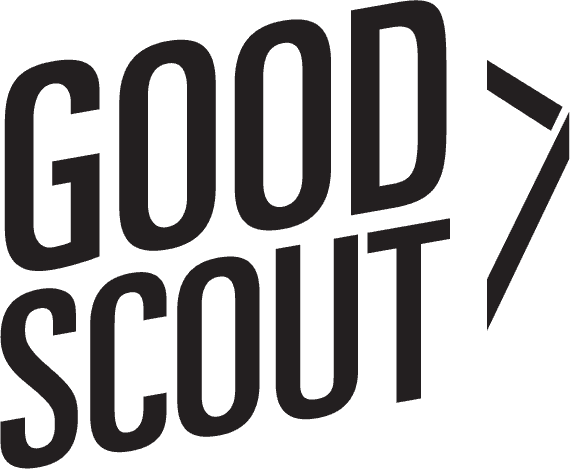When designing or carrying out your company’s social impact strategy, considering aspects of your brand and culture can help you realize an approach that is well-aligned with your business and that will better resonate with your audiences—from customers and consumers, to employees, to other stakeholders.
Good Scout Group Advisor and Senior Strategist Erin Dawkins has more than 20 years of experience consulting for philanthropists, for-profit entities, and not-for-profit organizations.
She recommends that companies take time to thoughtfully evaluate both their internal and external impact landscapes. This should happen at the outset of any new initiative and as an ongoing practice for fine-tuning and adapting.
Whether you are starting a social impact initiative within your company or looking to extend or adjust your existing impact goals, an internal-external alignment evaluation is a foundational step.
Dawkins shares insights on achieving congruence between your inward and outward efforts with a goal of magnifying impact and strengthening your organization’s reputation.
Exploring Your Internal Brand Culture Cues
When you have a clear internal culture that ties directly to your social impact strategy, the two elements cyclically feed into each other. Your team has a strong direction and motivation to care about their work, while your outward reputation reinforces the momentum of your company.
You can implement numerous strategies to positively impact your team and build a strong organizational culture—this might include consistent communication on your brand values, professional development for employees, volunteer opportunities, and more.
“The goal is proactively shaping your internal culture around what you want to reflect as a business,” Dawkins explained. “Your employees are ambassadors for your brand just as much as your consumers or customers are.”
As you work to establish alignment between your social impact strategy and your organization’s internal culture, it’s vital to determine your core values as a company and ensure those priorities remain at the center of your efforts. They act as the threads that run both internally and externally throughout your company, foundationally supporting any strategies you carry out.
“Making sure there’s alignment internally gives organizations a stronger foundation to stand on,” Dawkins said. “If you’re focused solely on external efforts first without ensuring that alignment internally, it can cause a disconnect.”
Reaching Internal and External Congruence on Social Impact Strategy
Creating strong bonds between your internal brand culture and your outward-facing impact strategy allows you to demonstrate your commitment and communicate authenticity to customers and consumers.
A recent example of strong brand-impact alignment that Dawkins cited is Shondaland’s “Seat at the Table” initiative, an effort to partner “with the incredibly talented artists from their various productions to create products that are both representative of the creators’ work on their respective shows as well as the creators themselves,” the production company announced.
The first such product collaboration is led by Bridgerton costume designer Ellen Mirojnick and jeweler Monica Rich Kosann.
Dawkins believes the initiative is an authentic way for Shondaland and Netflix to demonstrate their commitment to diversity, equity, and inclusion by including creatives who have been excluded in the past from product licensing deals.
“We started asking ourselves why more media companies aren’t recognizing their production creatives in this way—and examining how our choices and consumer products could be rooted in bringing others up the ladder with us,” Shondaland chief design and digital media officer Sandie Bailey told The Hollywood Reporter.
“Consumers want to see themselves reflected in your brand,” Dawkins said. “They want to be authentic, and there is an expectation that brands they favor are doing good things in the world. This is true across generations of consumers, but especially true of Millennials and even more so of Gen Z.”
Building Transparency into Your Impact Strategy
While ideal goals may help in creating aspirational motivation, they are not always rooted in the reality of the complex systems and challenges your business will face.
That’s why some of the most valuable tactics at your disposal are transparency and integrity.
“I try to create a safe space for clients to articulate what’s important to them,” Dawkins explained. “People want to believe that social impact is warm and fuzzy. While we want everyone to do good things out of the goodness of their hearts, it’s not always the leading motivator. It’s always a motivator, but it might not be number one.”
Recognizing this tension and acknowledging the friction between idealistic goals and realistic objectives magnifies the trustworthiness and authenticity of your brand to both your team and your audience.
Tracking and Measuring Social Impact and Brand Alignment
As you seek to ingrain your core values throughout the internal and external postures of the company, utilizing measurable data can help to determine where you currently stand and allow you to analyze what aspects of your social impact positioning need improvement.
“Assessment can include so many different things. It might mean talking to employees and surveying customers. You might also examine the social impact priorities you’ve espoused and then look to see if the resources you’re committing to the cause, financial and otherwise, match up to make a real difference,” Dawkins said.
Lastly, Good Scout recommends scheduling ongoing evaluations to recall your objectives when you implemented the strategy and document what really happened. Those results will help you identify any gaps between goals and outcomes and then recalibrate.
At Good Scout Group, we find the intersection of performance, branding, and data to help organizations strategize consistently and achieve measurable impact goals. Learn more about maximizing your organization’s potential by contacting our team.
